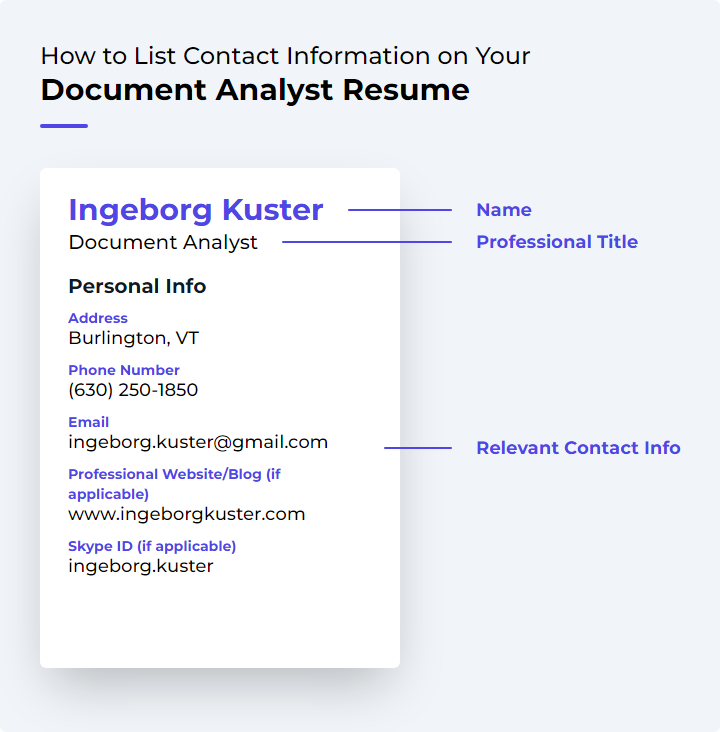Document Analyst Resume Examples
Writing a great document analyst resume is important because it is one of the first things a potential employer will see when they are considering you for a position. It is your opportunity to make a good first impression and sell yourself as the best candidate for the job.
Create your resume
Select from 7 professional resume templates
If you're looking for inspiration when it comes to drafting your own document analyst resume, look no further than the samples below. These resumes will help you highlight your experience and qualifications in the most effective way possible, giving you the best chance of landing the document analyst job you're after.
Essential Components of a Document Analyst Resume
A well-crafted resume is a crucial tool for a Document Analyst, highlighting their expertise, experience, and proficiency in document management and analysis. This specialized role requires a keen eye for detail and the ability to extract and interpret information from various documents. An impactful resume can significantly enhance a candidate's chances of securing a position in this competitive field. Below, we delve into the critical elements that constitute an effective Document Analyst resume, offering insights and tips to make each section stand out to potential employers.
Contact Information
At the top of your resume, ensure your Contact Information is prominently displayed and easily accessible for hiring managers.

Begin with your full name in a larger font to draw attention. Follow with your most reliable phone number, typically a mobile number, and a professional email address that includes your name. If applicable, include your LinkedIn profile to provide additional professional background, ensuring it is up-to-date and consistent with your resume.
Avoid including personal details such as age, marital status, or home address unless specifically requested in the job posting. This section sets the tone for your professional presentation, so accuracy and a polished appearance are key.
Objective Statement
The Objective Statement serves as a brief and compelling introduction to your professional aspirations, tailored to the Document Analyst role. It should succinctly convey your career goals while highlighting your relevant skills and experience.
Customize this section to reflect the specific requirements of the job you're applying for, emphasizing your analytical prowess, proficiency with document management systems, and any legal or regulatory knowledge pertinent to the role.
An effective objective statement might read: "Detail-oriented professional seeking a Document Analyst position to leverage my analytical skills and extensive experience in data management, utilizing advanced document management software to maintain the highest standards of accuracy."
Given that hiring managers often scan resumes quickly, your objective statement must be engaging and persuasive, demonstrating your unique value proposition.
Skills and Competencies
The Skills and Competencies section is your opportunity to showcase the specific abilities that qualify you for the Document Analyst role. This segment helps employers quickly assess whether you have the skill set necessary to excel in the position.
Highlight your analytical skills, meticulous attention to detail, technological proficiency, communication abilities, problem-solving aptitude, organizational talents, commitment to confidentiality, research expertise, collaborative spirit, and adaptability. Tailor this list to align with the particular demands of the job you're targeting.
Work Experience
The Work Experience section provides a comprehensive view of your professional history. Detail your previous positions, responsibilities, and achievements, emphasizing how your contributions as a Document Analyst added value to past employers.
Use action verbs to describe your responsibilities and accomplishments, and align your experience with the job description of the position you're applying for. This section should not only list your past roles but also illustrate your impact in those positions.
Education and Certifications
In the Education and Certifications section, list your academic credentials and any relevant certifications that underscore your qualifications for the Document Analyst role. Include degrees, institutions, graduation dates, and any pertinent coursework or training programs.
Highlight certifications such as Certified Records Manager (CRM) or Certified Document Imaging Architect+ (CDIA+) if you have them, as they can distinguish you from other candidates.
Technical Proficiency
Technical expertise is crucial for a Document Analyst. This section should outline your familiarity with document management software, databases, OCR tools, and any programming or data visualization skills that enhance your document analysis capabilities.
Provide examples of how you've applied these technical skills in practice, demonstrating your ability to improve processes and adapt to new technologies.
References
The References section allows potential employers to verify your professional abilities and achievements through credible sources. List the names, titles, companies, contact information, and your relationship to each reference, ensuring you have their consent to be included on your resume.
However, it's common to simply state "References available upon request" to save space and protect the privacy of your references until they are needed.
Remember to maintain a clear, concise, and professional tone throughout your resume, and ensure all information is relevant to the Document Analyst role. Good luck with your job search!